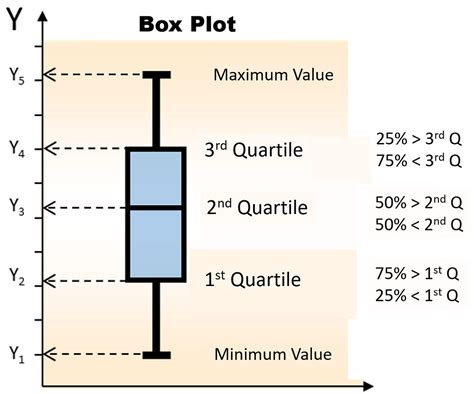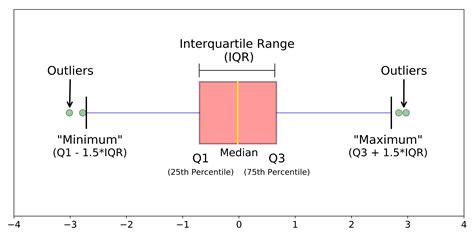distribution spread box plot A box plot, also known as a box-and-whisker plot, is a graphical representation of the distribution of a dataset. It summarizes key statistics such as the median, quartiles, and outliers, providing insights into the spread and . Nascar #43 Jeff Green 2005 Race Used Hamburger Helper Door Panel Richard Petty Racing $ 700.00
0 · upper adjacent value in box plot
1 · second quartile box plot
2 · mean interpreting box plots
3 · interpreting box plots
4 · how to describe box plot
5 · example problems of box plot
6 · box plot from frequency table
7 · box plot 3rd quartile
$284.99
A box plot, sometimes called a box and whisker plot, provides a snapshot of your continuous variable’s distribution. They particularly excel at comparing the distributions of groups within your dataset.
A boxplot, also known as a box plot, box plots, or box-and-whisker plot, is a standardized way of displaying the distribution of a data set based on its five-number summary .
upper adjacent value in box plot
second quartile box plot
Box plots are a useful way to compare two or more sets of data visually. In statistics, a box plot is used to provide a visual summary of data. The distribution of data is shown through the . A box plot, also known as a box-and-whisker plot, is a graphical representation of the distribution of a dataset. It summarizes key statistics such as the median, quartiles, and outliers, providing insights into the spread and . What is a box plot? A box plot shows the distribution of data for a continuous variable. How are box plots used? Box plots help you see the center and spread of data. You can also use them as a visual tool to check for .A boxplot, also called a box and whisker plot, is a graph that shows the dispersion and central tendency of a dataset using a five number summary. The dispersion — a measure of how spread out a data set is — includes quartiles and the .
A box plot, also known as a box-and-whisker plot, is a standardized way of displaying the distribution of data based on a five-number summary: minimum, first quartile (Q1), median, third quartile (Q3), and maximum.Box and whisker plots are a type of graph used to visualize the distribution of data. They offer a quick and informative way to understand several key aspects of your data set. So, let's see what box and whisker plots show: Spread of the . What is a Box Plot? A box plot is a standardized way of displaying the distribution of a dataset based on a five-number summary: minimum, first quartile (Q1), median, third quartile (Q3), and. Box plots visually show the distribution of numerical data and skewness by displaying the data quartiles (or percentiles) and averages. Box plots show the five-number summary of a set of data: including the minimum score, first (lower) quartile, median, third (upper) quartile, and maximum score.
A box plot, sometimes called a box and whisker plot, provides a snapshot of your continuous variable’s distribution. They particularly excel at comparing the distributions of groups within your dataset.A boxplot, also known as a box plot, box plots, or box-and-whisker plot, is a standardized way of displaying the distribution of a data set based on its five-number summary of data points: the “minimum,” first quartile [Q1], median, third quartile [Q3] and “maximum.”Box plots are a useful way to compare two or more sets of data visually. In statistics, a box plot is used to provide a visual summary of data. The distribution of data is shown through the positions of the median and the quartiles. From this, the spread and skew of the data can also be seen.
A box plot, also known as a box-and-whisker plot, is a graphical representation of the distribution of a dataset. It summarizes key statistics such as the median, quartiles, and outliers, providing insights into the spread and central tendency of the data. What is a box plot? A box plot shows the distribution of data for a continuous variable. How are box plots used? Box plots help you see the center and spread of data. You can also use them as a visual tool to check for normality or to identify points that may be outliers. Is a box plot the same as a box-and-whisker plot? Yes.A boxplot, also called a box and whisker plot, is a graph that shows the dispersion and central tendency of a dataset using a five number summary. The dispersion — a measure of how spread out a data set is — includes quartiles and the interquartile range.
A box plot, also known as a box-and-whisker plot, is a standardized way of displaying the distribution of data based on a five-number summary: minimum, first quartile (Q1), median, third quartile (Q3), and maximum.Box and whisker plots are a type of graph used to visualize the distribution of data. They offer a quick and informative way to understand several key aspects of your data set. So, let's see what box and whisker plots show: Spread of the data: The box shows middle 50% of the data, with the median value dividing the box in half. What is a Box Plot? A box plot is a standardized way of displaying the distribution of a dataset based on a five-number summary: minimum, first quartile (Q1), median, third quartile (Q3), and. Box plots visually show the distribution of numerical data and skewness by displaying the data quartiles (or percentiles) and averages. Box plots show the five-number summary of a set of data: including the minimum score, first (lower) quartile, median, third (upper) quartile, and maximum score.
mean interpreting box plots
A box plot, sometimes called a box and whisker plot, provides a snapshot of your continuous variable’s distribution. They particularly excel at comparing the distributions of groups within your dataset.A boxplot, also known as a box plot, box plots, or box-and-whisker plot, is a standardized way of displaying the distribution of a data set based on its five-number summary of data points: the “minimum,” first quartile [Q1], median, third quartile [Q3] and “maximum.”Box plots are a useful way to compare two or more sets of data visually. In statistics, a box plot is used to provide a visual summary of data. The distribution of data is shown through the positions of the median and the quartiles. From this, the spread and skew of the data can also be seen. A box plot, also known as a box-and-whisker plot, is a graphical representation of the distribution of a dataset. It summarizes key statistics such as the median, quartiles, and outliers, providing insights into the spread and central tendency of the data.
What is a box plot? A box plot shows the distribution of data for a continuous variable. How are box plots used? Box plots help you see the center and spread of data. You can also use them as a visual tool to check for normality or to identify points that may be outliers. Is a box plot the same as a box-and-whisker plot? Yes.A boxplot, also called a box and whisker plot, is a graph that shows the dispersion and central tendency of a dataset using a five number summary. The dispersion — a measure of how spread out a data set is — includes quartiles and the interquartile range.
A box plot, also known as a box-and-whisker plot, is a standardized way of displaying the distribution of data based on a five-number summary: minimum, first quartile (Q1), median, third quartile (Q3), and maximum.
Box and whisker plots are a type of graph used to visualize the distribution of data. They offer a quick and informative way to understand several key aspects of your data set. So, let's see what box and whisker plots show: Spread of the data: The box shows middle 50% of the data, with the median value dividing the box in half.


interpreting box plots

how to describe box plot
example problems of box plot
box plot from frequency table
$100K+
distribution spread box plot|second quartile box plot